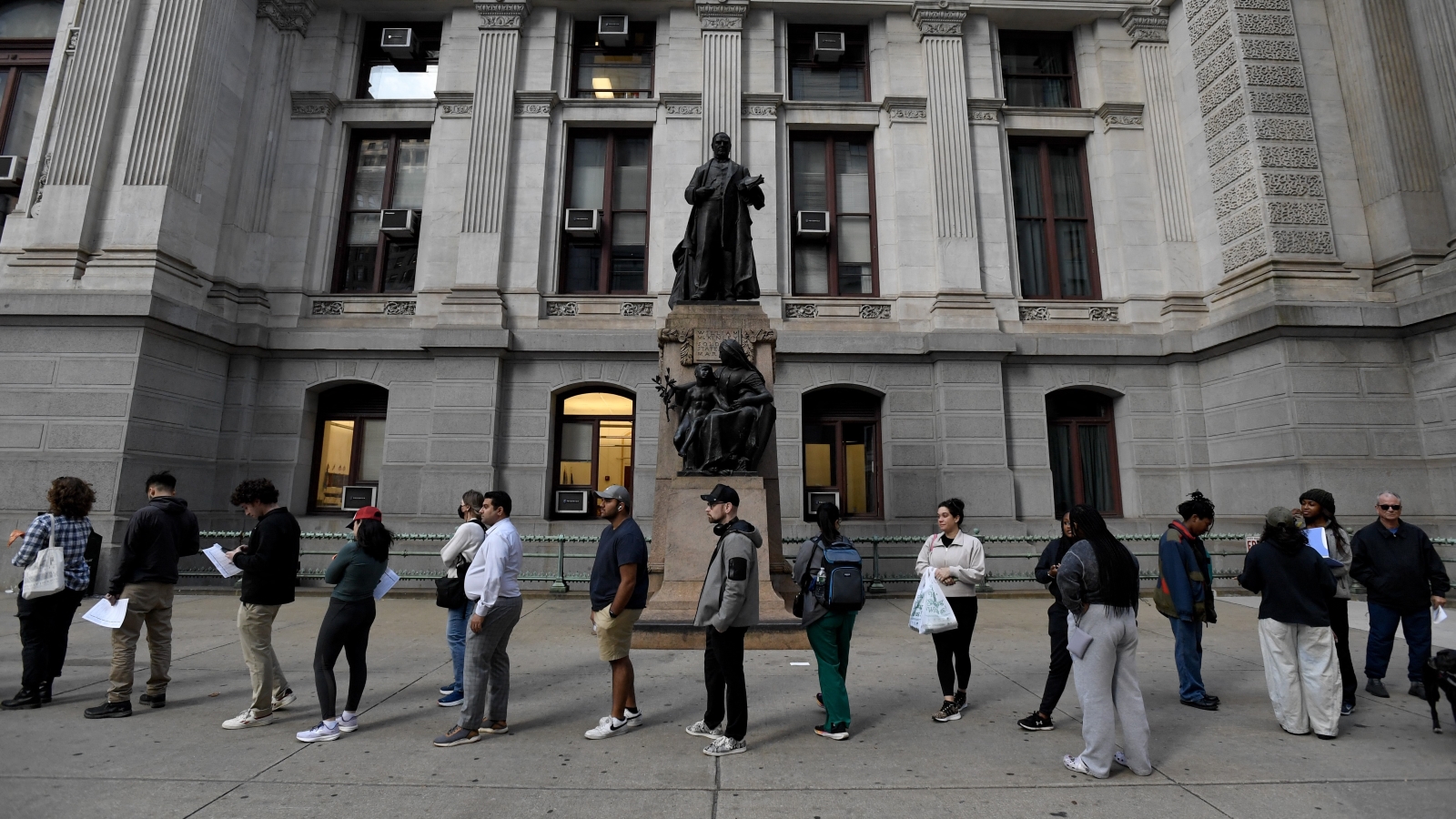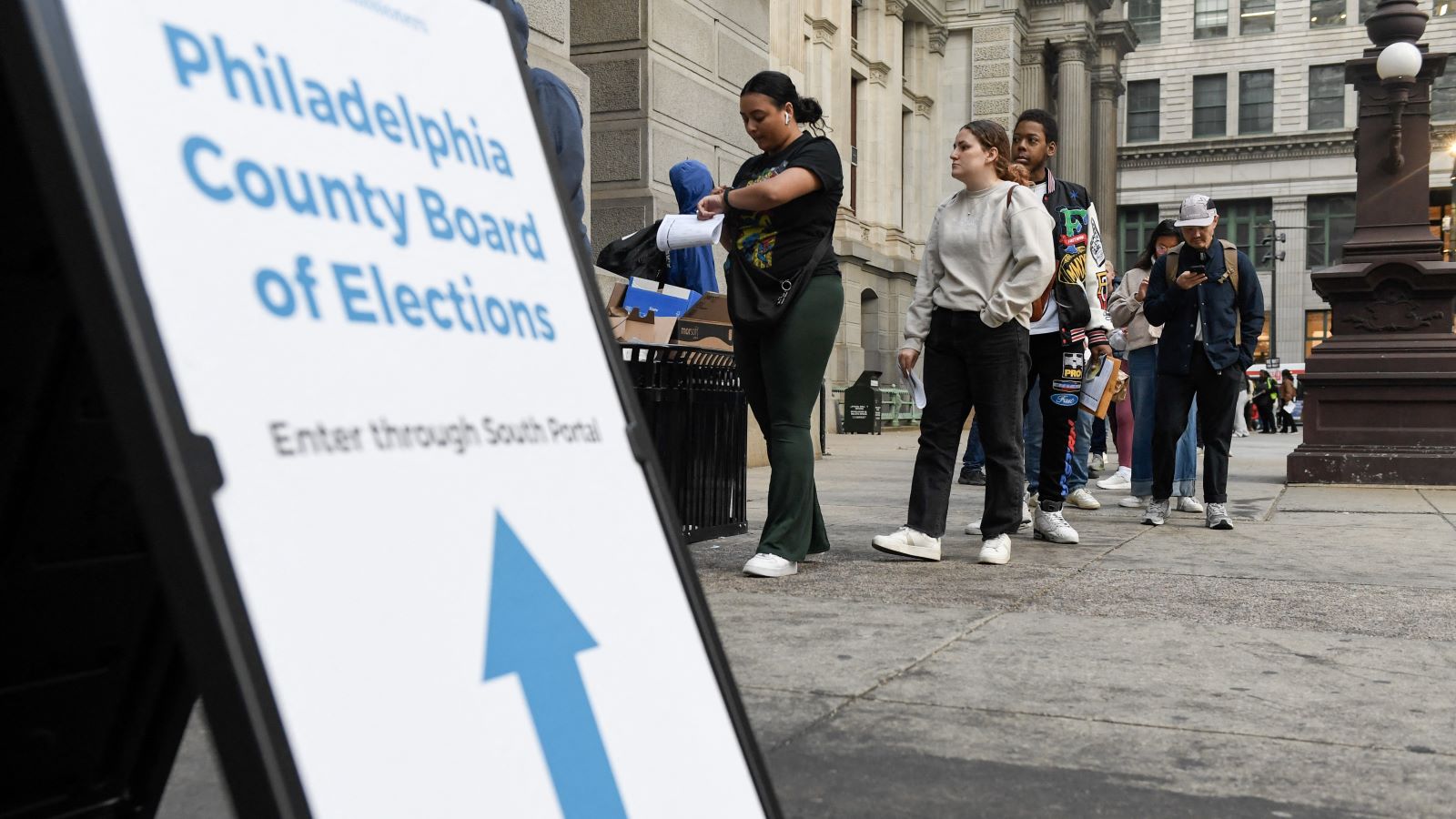In the final days before the presidential election, roughly 2,000 volunteers from all around the country are spending hours calling voters across 19 states. Their objective? Get people who care about climate change to the polls, particularly those who didn’t show up in the last presidential election.
You might expect that this volunteer force, gathered by the nonprofit Environmental Voter Project, would talk about a particular candidate. After all, Vice President Kamala Harris, a Democrat who cast the deciding vote for the biggest climate bill in Congress’ history, contrasts sharply with former President Donald Trump, a Republican who rolled back dozens of environmental protections and pulled the United States out of the Paris climate agreement. Though it’s true that most voters who prioritize climate change pick Democratic tickets, phone bankers for the Environmental Voter Project keep their message nonpartisan. In fact, their script doesn’t even mention climate change.
In an election expected to be won by a razor-thin margin, the estimated 8 million registered voters who care about the environment but didn’t vote in 2020 could swing entire states, especially states where the race is expected to be tight. The organization has found 245,000 registered voters in Pennsylvania who care about climate change but seldom turn out to the polls.
“Climate voters and first-time climate voters can absolutely make the difference this fall,” said Nathaniel Stinnett, the Environmental Voter Project’s founder and executive director.
Research suggests that those climate voters who showed up in 2020 had a meaningful influence on the election. Climate change was the top factor that compelled voters under 45 who previously voted third-party, or not at all, to cast their ballots for President Joe Biden in 2020, according to a Navigator Research poll. Another analysis from the University of Colorado, Boulder, found that, hypothetically, Biden would have lost 3 percent of the popular vote if climate change hadn’t played a role in voters’ preferences — enough to tip the election.

Stinnett believes that the climate vote could be critical for this year’s presidential election in Pennsylvania, Georgia, and North Carolina, the three swing states that have the largest portion of voters who care about the climate but are unlikely to vote, according to the Environmental Voter Project’s modeling. Since 2017, the group reports it has helped convert more than 350,000 previously inactive voters in Pennsylvania into super-consistent voters — in a state that Biden won by just 80,555 votes in 2020. By contrast, it isn’t reaching out to voters in Michigan and Wisconsin, because there aren’t as many non-voting environmentalists in those swing states.
Stinnett said that of the 4.8 million “potential first-time climate voters” that volunteers are targeting in 19 states, almost 350,000 of them have cast their ballots early, which Stinnett sees as a promising sign. That includes 45,000 first-time climate voters in Georgia and more than 33,000 in North Carolina.
Anyone who lists climate change as their top priority is considered a climate voter. But some segments of Americans are more likely to be in this group than others: Democrats, women, young people, Black people, and those with heritage from Asia and the Pacific Islands. “If you are more likely to directly feel the impacts of toxic air and toxic water and extreme weather, well, you’re probably going to care more about the climate crisis and environmental issues,” Stinnett said.
Of course, climate voters have other concerns, too. That’s why volunteers with the League of Conservation Voters have knocked on 2.5 million doors across the country, asking potential voters what matters to them, then explaining how that issue connects to climate change. “You know, us trying to tell them what is important — that can matter, but it’s typically far less effective than asking someone what they care about,” said Pete Maysmith, senior vice president of campaigns at the environmental advocacy group. About 75 percent of the voters the group has talked to say they’re planning to vote for Harris, who the League of Conservation Voters has endorsed.
The group is also making an effort to reach voters online, working with TikTok personalities to reach younger voters and creating digital ads that run on platforms like Hulu and YouTube. One TikTok video features the “Queen of WaterTok” baking macarons decorated with Kamala Harris’ face while talking about the vice president’s efforts to tackle pollution. In a totally different approach, a new digital ad shown to voters in Georgia and North Carolina in the aftermath of Hurricane Helene conveys the stakes of the presidential election by illustrating how climate-enhanced storms might threaten babies born today. While living through a fire, flood, or hot weather typically has only a slight effect on how people vote, it’s possible a disaster could make a difference in a close race.
The Environmental Voter Project has a different method of nudging climate-concerned voters to the polls. The group hasn’t endorsed a candidate, and volunteers don’t talk to voters about climate change at all. Instead, the group uses tactics rooted in behavioral science to get people to cast their ballots, tapping into the power of peer pressure — like mailing people their voting histories and reminding them that it’s public record. They’ve also been asking voters how they plan to vote — early, by mail, or by Election Day — phrasing the question so as to sidestep the option of not voting.
“All we’re trying to do,” Stinnett said, “is change someone’s behavior, rather than their minds.”




